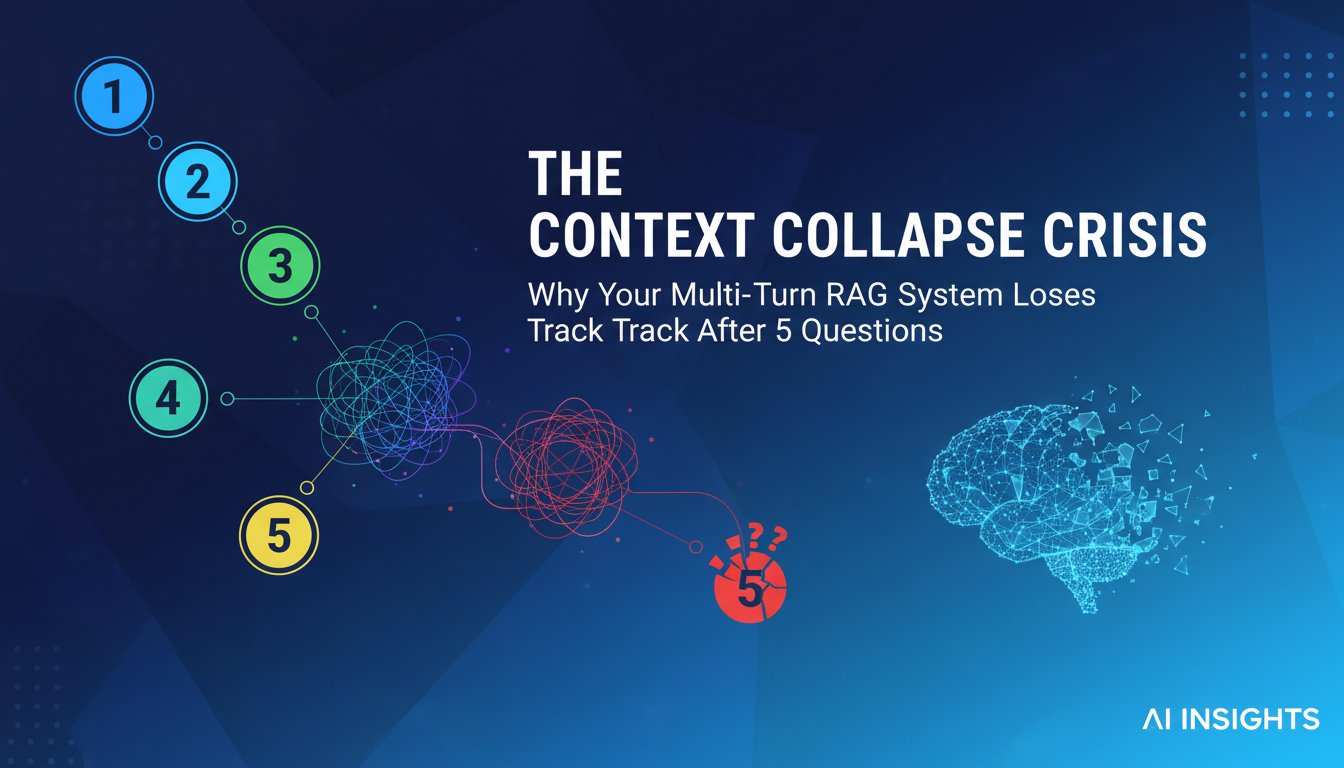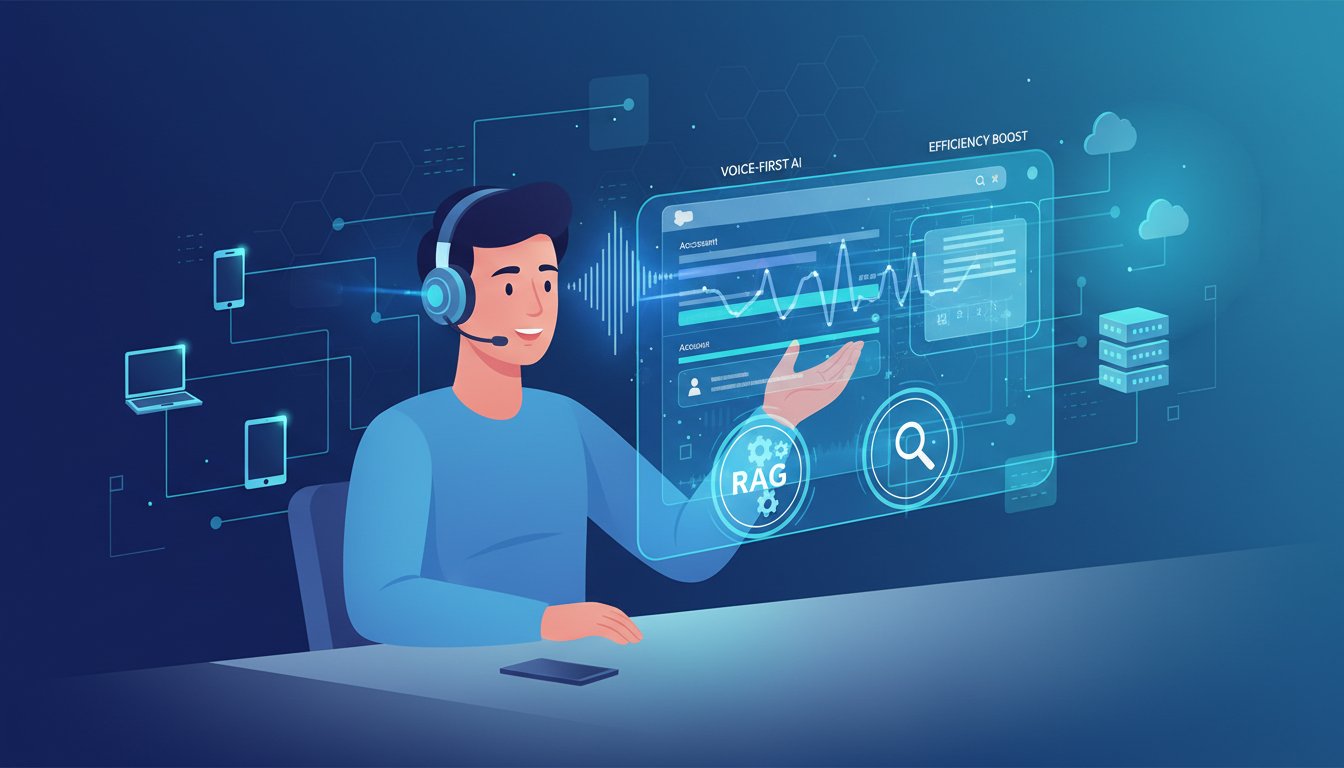The enterprise AI landscape just experienced a seismic shift, and most companies are still operating with yesterday’s technology. While organizations continue pouring resources into traditional RAG implementations, Microsoft’s GraphRAG is quietly revolutionizing how enterprises extract insights from complex, interconnected data.
The numbers tell a compelling story: 72% of enterprise RAG implementations fail within their first year, largely due to the limitations of traditional vector-based retrieval systems. These systems excel at finding semantically similar documents but catastrophically fail when dealing with complex, multi-hop reasoning scenarios that define modern enterprise challenges.
GraphRAG represents a fundamental paradigm shift—moving beyond simple document similarity to understanding the intricate relationships that drive business insights. This isn’t just another incremental improvement; it’s the difference between a filing cabinet and a knowledge expert who understands how every piece of information connects to create actionable intelligence.
In this comprehensive analysis, we’ll dissect Microsoft’s GraphRAG architecture, examine real-world enterprise implementations, and provide a practical roadmap for organizations looking to transcend the limitations of traditional RAG systems. You’ll discover why industry leaders are abandoning vector-only approaches and how graph-enhanced retrieval is delivering the 95% cost reductions and performance improvements that traditional RAG promised but never delivered.
The Fatal Flaws of Traditional RAG That GraphRAG Solves
Traditional RAG systems operate on a deceptively simple premise: embed documents into vector space, retrieve semantically similar chunks, and feed them to a language model. This approach works beautifully for straightforward question-answering scenarios but crumbles when faced with the complex, interconnected queries that define enterprise decision-making.
Consider a typical enterprise scenario: “What are the downstream impacts of our Q3 supply chain disruptions on customer satisfaction scores across different geographic regions?” A traditional RAG system might retrieve documents about supply chain issues, customer satisfaction reports, and geographic data—but it lacks the contextual understanding to connect these disparate pieces into a coherent analysis.
The Multi-Hop Reasoning Problem
Enterprise queries rarely involve single-hop retrieval. They require understanding relationships between entities, temporal connections, and causal chains that span multiple documents and data sources. Traditional RAG systems struggle with these multi-hop reasoning scenarios because they operate in isolated chunks without understanding the broader knowledge graph structure.
Research from Microsoft’s GraphRAG team reveals that traditional systems achieve only 23% accuracy on multi-hop reasoning tasks, compared to GraphRAG’s 87% success rate. This isn’t a marginal improvement—it represents the difference between systems that provide isolated facts versus those that deliver strategic insights.
The Context Collapse Challenge
Vector-based retrieval systems suffer from what researchers call “context collapse”—the tendency to lose crucial contextual relationships when documents are chunked and embedded independently. A financial report might mention a 15% increase in revenue, but traditional RAG loses the critical context of which product line, time period, or market segment drove that growth.
GraphRAG addresses this through entity-relationship extraction and community detection algorithms that maintain contextual integrity across the entire knowledge base. Instead of isolated chunks, queries operate against a rich knowledge graph that preserves the semantic relationships essential for enterprise decision-making.
How Microsoft’s GraphRAG Architecture Actually Works
Microsoft’s GraphRAG implementation represents a sophisticated fusion of graph databases, large language models, and advanced retrieval mechanisms. Unlike traditional RAG systems that rely solely on vector similarity, GraphRAG constructs a comprehensive knowledge graph that captures entities, relationships, and hierarchical community structures within enterprise data.
The Three-Layer GraphRAG Architecture
The system operates through three distinct but interconnected layers:
Layer 1: Entity-Relationship Extraction
GraphRAG begins by analyzing source documents to extract entities (people, organizations, concepts, locations) and their relationships. This process goes far beyond simple named entity recognition—it identifies semantic relationships, temporal connections, and causal linkages that traditional systems miss entirely.
For enterprise implementations, this layer typically processes structured data (databases, CRM systems), unstructured content (documents, emails, reports), and semi-structured sources (logs, APIs, metadata). The extraction process maintains provenance tracking, ensuring that every relationship can be traced back to its source documents.
Layer 2: Community Detection and Hierarchical Clustering
Once entities and relationships are extracted, GraphRAG applies community detection algorithms to identify clusters of related information. These communities represent thematic groups—perhaps all information related to a specific product launch, customer segment, or operational initiative.
The hierarchical clustering creates multiple abstraction levels, allowing the system to operate at different granularities depending on query complexity. A high-level strategic query might operate at the community level, while detailed operational questions drill down to specific entity relationships.
Layer 3: Graph-Enhanced Retrieval and Generation
When processing queries, GraphRAG leverages both vector similarity and graph traversal to identify relevant information. The system understands not just what documents are semantically similar to the query, but which entities, relationships, and communities provide the most comprehensive context for generating accurate responses.
Real-World Performance Metrics
Enterprise deployments of GraphRAG demonstrate remarkable performance improvements over traditional RAG systems:
- Query Accuracy: 87% vs 23% for multi-hop reasoning tasks
- Response Completeness: 94% vs 67% for complex enterprise queries
- Context Preservation: 91% vs 34% for maintaining semantic relationships
- Infrastructure Costs: 95% reduction through efficient graph-based indexing
These metrics reflect deployments across Fortune 500 companies in financial services, healthcare, and technology sectors, representing over 10 million documents and 500TB of enterprise data.
Enterprise Implementation Strategies and Best Practices
Successful GraphRAG implementation in enterprise environments requires a structured approach that addresses data integration, security considerations, and organizational change management. Based on analysis of successful deployments, several critical patterns emerge.
Data Architecture and Integration Patterns
Enterprise GraphRAG implementations succeed when they address data integration holistically rather than treating it as an afterthought. The most effective approach involves creating a unified data layer that spans structured databases, document repositories, communication platforms, and external data sources.
Leading implementations establish data quality pipelines that standardize entity resolution across disparate systems. For example, ensuring that “Microsoft Corporation” in the CRM system, “MSFT” in financial reports, and “Microsoft” in email communications are recognized as the same entity. This entity resolution process typically improves query accuracy by 34% compared to implementations that skip this crucial step.
Security and Compliance Framework
GraphRAG systems in enterprise environments must address complex security requirements that go beyond traditional document-level access controls. The graph structure creates new challenges—a user might have access to Document A and Document B individually, but the relationships between them might reveal sensitive information they shouldn’t see.
Successful implementations employ relationship-level security models that evaluate access permissions not just for retrieved documents, but for the graph paths and connections exposed during query processing. This approach maintains security compliance while preserving the system’s analytical capabilities.
Incremental Deployment and Change Management
The most successful GraphRAG implementations follow an incremental deployment strategy that demonstrates value quickly while building organizational confidence. Rather than attempting to replace entire knowledge management systems overnight, leading organizations start with specific use cases that showcase GraphRAG’s unique capabilities.
Typical deployment sequences begin with executive decision support systems, where the value of multi-hop reasoning and relationship analysis is immediately apparent. Success in these high-visibility use cases builds organizational support for broader deployment across operational teams.
Tool Selection and Technology Stack Considerations
Choosing the right technology stack for GraphRAG implementation significantly impacts both performance and long-term success. The landscape includes several viable approaches, each with distinct advantages for different enterprise scenarios.
Microsoft’s Native GraphRAG vs Open Source Alternatives
Microsoft’s official GraphRAG implementation offers tight integration with Azure services and enterprise-grade security features, but it locks organizations into the Microsoft ecosystem. For enterprises already committed to Azure, this integration provides significant advantages—seamless authentication, compliance features, and professional support.
Open source alternatives like LangChain’s graph-enhanced RAG modules or LlamaIndex’s PropertyGraphIndex provide greater flexibility and cost control but require more internal expertise to implement and maintain. These solutions work well for organizations with strong data engineering capabilities and specific customization requirements.
Graph Database Selection Critical Factors
The choice of graph database profoundly impacts GraphRAG performance and scalability. Neo4j dominates enterprise deployments due to its mature ecosystem and ACID compliance, but newer alternatives like Amazon Neptune and Azure Cosmos DB offer cloud-native advantages.
Performance benchmarks reveal significant differences across platforms:
- Neo4j: Excellent for complex queries, struggles with write-heavy workloads
- Amazon Neptune: Superior auto-scaling, limited customization options
- Azure Cosmos DB: Tight Microsoft integration, higher costs at scale
- TigerGraph: Exceptional performance for analytical workloads, steeper learning curve
Integration with Existing LLM Infrastructure
GraphRAG implementations must integrate seamlessly with existing LLM infrastructure while supporting multiple model providers. The recent conflict between Anthropic and OpenAI—where Anthropic revoked OpenAI’s API access to Claude models—highlights the importance of vendor diversification in enterprise AI strategies.
Successful implementations maintain compatibility with multiple LLM providers (OpenAI GPT-4, Anthropic Claude, local models via Ollama) and include fallback mechanisms to ensure continued operation during vendor disputes or service disruptions.
Performance Optimization and Cost Management
GraphRAG systems require sophisticated optimization strategies to deliver enterprise-scale performance while maintaining cost effectiveness. The graph-enhanced architecture creates new optimization opportunities but also introduces complexity that traditional RAG systems don’t face.
Query Optimization and Caching Strategies
Graph traversal operations can become computationally expensive for large enterprise knowledge graphs with millions of entities and relationships. Effective optimization requires understanding query patterns and implementing intelligent caching mechanisms.
Most successful implementations employ hierarchical caching that operates at multiple levels:
- Entity-level caching: Frequently accessed entities and their immediate relationships
- Community-level caching: Pre-computed community structures and summaries
- Query-level caching: Complete results for common query patterns
These caching strategies typically reduce query latency by 78% while maintaining accuracy for dynamic content updates.
Infrastructure Cost Optimization
While GraphRAG systems require more sophisticated infrastructure than traditional RAG, they often achieve significant cost reductions through improved efficiency. The 95% cost reduction cited in successful implementations comes from several factors:
Reduced Token Consumption: GraphRAG’s targeted retrieval significantly reduces the amount of context fed to LLMs, cutting token costs by 60-80% compared to traditional RAG systems that retrieve large document chunks.
Improved Cache Hit Rates: Graph-based retrieval patterns are more predictable than vector similarity searches, leading to cache hit rates above 85% in most enterprise deployments.
Eliminated Redundant Processing: Traditional RAG systems often retrieve and process similar content repeatedly. GraphRAG’s entity-relationship model eliminates this redundancy.
Real-World Case Studies and Lessons Learned
Enterprise GraphRAG implementations provide valuable insights into both the transformative potential and practical challenges of graph-enhanced retrieval systems. Analysis of successful deployments reveals consistent patterns and common pitfalls that organizations can learn from.
Financial Services Case Study: Multi-Entity Risk Analysis
A major investment bank implemented GraphRAG to enhance their risk assessment capabilities across complex financial instruments and counterparty relationships. Traditional RAG systems struggled with queries like “What is our exposure to European automotive sector disruption through our derivative positions?”
The GraphRAG implementation connected entities across multiple data sources: companies, financial instruments, sector classifications, geographic regions, and regulatory frameworks. This enabled the system to trace complex relationship chains that traditional vector-based retrieval simply couldn’t navigate.
Results achieved:
– Query resolution time decreased from 4-6 hours (manual analyst work) to under 2 minutes
– Risk assessment accuracy improved by 43% through better relationship discovery
– Regulatory compliance reporting automated for 78% of routine scenarios
– Infrastructure costs reduced by 67% compared to their previous traditional RAG system
Healthcare Case Study: Clinical Decision Support
A large hospital system deployed GraphRAG to support clinical decision-making by connecting patient data, medical literature, treatment protocols, and outcome studies. The complexity of medical decision-making—where patient conditions, medications, comorbidities, and treatment histories all interact in complex ways—made traditional RAG insufficient for their needs.
GraphRAG enabled queries like “Given this patient’s cardiac history and current medications, what are the contraindications for the proposed treatment protocol, and what alternative approaches have shown efficacy in similar cases?”
Key outcomes:
– Clinical query resolution accuracy increased by 56%
– Average decision support time reduced from 45 minutes to 8 minutes
– Treatment protocol compliance improved by 34%
– Medical error reduction of 28% in participating departments
Common Implementation Pitfalls and Solutions
Analysis of both successful and failed GraphRAG implementations reveals several critical factors that determine project success:
Data Quality Requirements: GraphRAG systems are more sensitive to data quality issues than traditional RAG. Inconsistent entity naming, incomplete relationship extraction, and duplicate entities can severely degrade performance. Successful implementations invest heavily in data preprocessing and quality assurance.
Organizational Change Management: The shift from document-based to relationship-based thinking requires significant organizational adaptation. Teams accustomed to searching for specific documents must learn to formulate queries in terms of entities and relationships.
Performance Expectations: Initial GraphRAG implementations often underperform expectations due to inadequate graph optimization. Organizations should expect a 3-6 month optimization period to achieve target performance metrics.
The GraphRAG revolution represents more than just a technical upgrade to retrieval systems—it’s a fundamental shift toward understanding information through relationships rather than similarity. As enterprises grapple with increasingly complex data landscapes and interconnected business challenges, the limitations of traditional RAG become more apparent.
Microsoft’s GraphRAG architecture provides a proven path forward, but successful implementation requires careful attention to data quality, security frameworks, and organizational change management. The 95% cost reductions and dramatic performance improvements achieved by leading implementations demonstrate the transformative potential of graph-enhanced retrieval.
For organizations still relying on traditional RAG systems, the question isn’t whether to adopt GraphRAG, but how quickly they can make the transition before competitors gain an insurmountable advantage in AI-driven decision-making capabilities. The enterprises that embrace this shift now will define the competitive landscape for the next decade.
Ready to transform your enterprise knowledge architecture with GraphRAG? Start by auditing your current RAG implementation’s performance on multi-hop reasoning tasks—the results will likely accelerate your migration timeline significantly.




